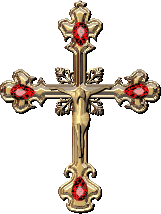
 |

| |
|
|
|
|
|
|
|
|
|
|
|
|
|
|
... in whom we have redemption through His blood. notice WHO will see (or provide) , and What is seen (or provided: "8And Isaac speaketh unto Abraham his father, and saith, 'My father,' and he saith, 'Here am I, my son.' And he saith, 'Lo, the fire and the wood, and where the lamb for a burnt-offering?' and Abraham saith, 'God doth provide (SEE in original Hebrew) for Himself the lamb for a burnt-offering, my son;' and they go on both of them together. 9Then they came to the place of which God had told him. And Abraham built an altar there and placed the wood in order; and he bound Isaac his son and laid him on the altar, upon the wood. 10And Abraham stretched out his hand and took the knife to slay his son. 11But the Angel of the LORD called to him from heaven and said, "Abraham, Abraham!" So he said, "Here I am." 12And He said, "Do not lay your hand on the lad, or do anything to him; for now I know that you fear God, since you have not withheld your son, your only son, from Me." 13Then Abraham lifted his eyes and looked, and there behind him was a ram caught in a thicket by its horns. So Abraham went and took the ram, and offered it up for a burnt offering instead of his son. 14And Abraham called the name of the place, The-LORD-Will-Provide (In Hebrew: The Lord will be seen); as it is said to this day, "In the Mount of The LORD it shall be provided. (In original Hebrew: The Lord shall be seen, that is Jehovah-Jireh)" LXE Genesis22:14: And Abraam called the name of that place, The Lord hath seen; that they might say to-day, In the mount the Lord was seen. " * A Ram of sacrifice for redemption tied to the wood. * It came from we do not know. Compare John1:1,14; 7: 27-28. * Testified to from the voice of God. Compare Matthew3:17 John5:37. * In the beginning Abraham said: "The Lord will see for Himself", i.e. a way for redemption. * In the end, "The Lord Himself was seen" as an object of salvation. * = The Lord will provide the Lord! * God the Father is the provider of redemption. He provided His own Son fot it. * God the Son is the provider of redemption. He provided Himself for it. |
| |
|
|
|
|
|
|
|
|
|
|
|
|
|
|
...having become a curse for us notice the crossed hands of Jacob: "13And Joseph took them both, Ephraim with his right hand toward Israel's left hand, and Manasseh with his left hand toward Israel's right hand, and brought them near him. 14Then Israel stretched out his right hand and laid it on Ephraim's head, who was the younger, and his left hand on Manasseh's head, guiding his hands knowingly, for Manasseh was the firstborn. 15And he blessed Joseph, and said: "God, before whom my fathers Abraham and Isaac walked, The God who has fed me all my life long to this day, 16The Angel who has redeemed me from all evil, Bless the lads; Let my name be named upon them, And the name of my fathers Abraham and Isaac; And let them grow into a multitude in the midst of the earth." 17Now when Joseph saw that his father laid his right hand on the head of Ephraim, it displeased him; so he took hold of his father's hand to remove it from Ephraim's head to Manasseh's head. 18And Joseph said to his father, "Not so, my father, for this one is the firstborn; put your right hand on his head." 19But his father refused and said, "I know, my son, I know. He also shall become a people, and he also shall be great; but truly his younger brother shall be greater than he, and his descendants shall become a multitude of nations." * Joseph made it the human way, but Jacob surprised him by a cross, and insisted he knew what he was doing. * Joseph, blessing comes only via the cross only. Jacob knows. Had you made it the cross way, you would have blessed your sons in the order you had wanted. |
| |
|
|
|
|
|
|
|
|
|
|
|
|
|
|